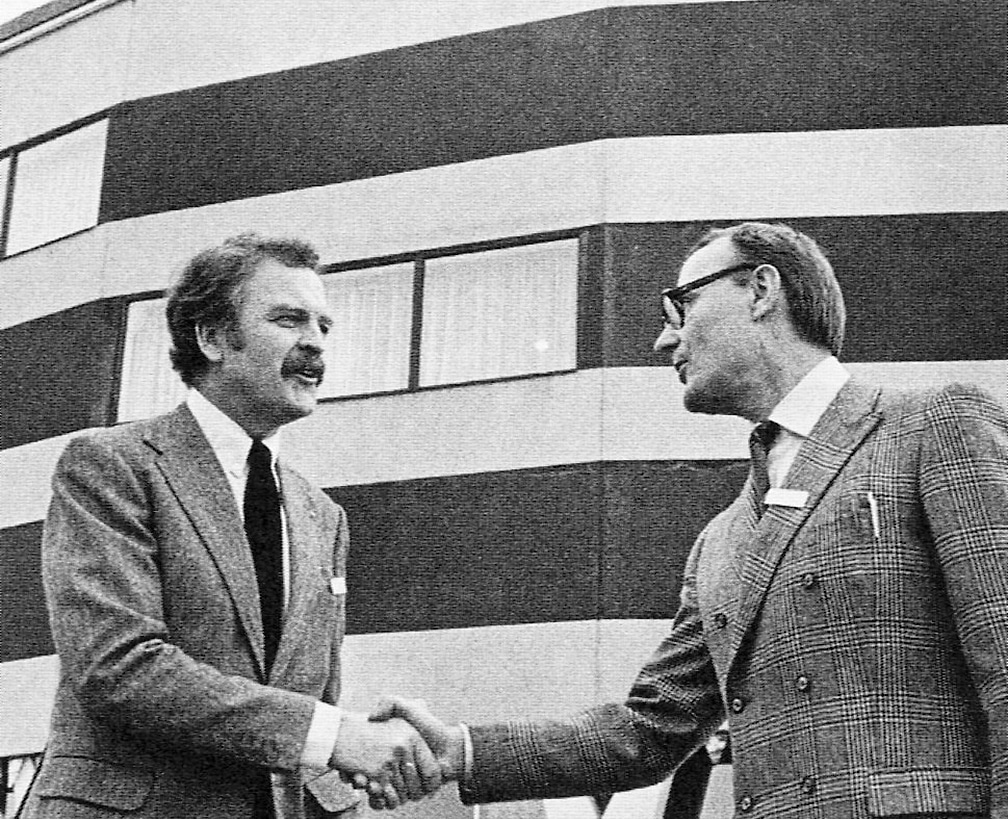We all know the familiar yellow and blue branding of the Swedish brand IKEA and that it sells low-cost furniture, as well as other household items. A less well-known fact might be that Ikea products are given names, not numbers, because its founder was dyslexic and had difficulty with numbers: A founder who, until he died in 2018, remained unable to shake his fascist past.
Ikea founder Ingvar Kamprad was the person who brought the concept of DIY furniture building into our homes. Ikea was already a successful business when, on a promotional photoshoot one day, the photographer complained to Ingvar about having a lack of storage space for his equipment. He quick-thinkingly removed the legs of his stool and packed it away in his case. Notoriously thrifty, Ingvar realised that he could use this method to cut shipping costs, so he stole the idea, and flatpack build-it-yourself furniture was created.
Ingvar’s German father and grandmother were both confirmed Nazi’s and he himself was a member of the most extreme Nazi Party that existed in Sweden. He was also lifelong friends with Per Engdahl, one of the most prominent fascists in the world post WW2. On coming to light, these facts plagued the Ikea founder in his later years, threatening the success of his company.
Ingvar’s father, Feodor, was the son of German immigrants. His mother, Berta, was Swedish. Ingvar grew up on the farm that his father inherited from his parents, in Elmtaryd, in the parish of Agunnaryd, Sweden. In 1943, aged 17, before going to the School of Commerce in Gothenburg, Ingvar set up his own mail order business selling imported pens. He called it IKEA: I for Ingvar, K for Kamprad, E for Elmtaryd and A for Agunnaryd. In 1948, he began to advertise items of furniture designed to appeal principally to farmers and the rural poor in his mail order brochure, ‘Ikea News’. The first lines, all at unprecedentedly low prices, included an armless nursing chair called Ruth, a coffee table, a sofa bed and a chandelier, all made by local manufacturers in Almhult and sold at the lowest possible price. All Ikea pieces were given names, as Ingvar, who was dyslexic, had difficulty with numbers.
The same year Ingvar set up Ikea, he also became member number 4,014 of Swedish Socialist Unity, the country’s leading far-right party during the war. Apparently, Sweden’s general security service kept him under surveillance for at least eight months, confiscating and reading his correspondence. These files became readily available posthumously upon Ingvar’s death. His file was titled ‘Memorandum concerning: Nazi’ and it was stamped ‘secret’ in red letters. It was this membership that would plague Ingvar for the rest of his life despite many efforts to conceal the information.
In November 1942, Ingvar wrote that he had recruited “quite a few comrades” to the party and missed no opportunity to work for the movement. The memorandum about his correspondence reached the Sixth Division of the Stockholm police on July 6, 1943. Ingvar was an active member of the Svensk Socialistisk Samling, Sweden’s Nazi party. Six days later, Ingvar sent an application to the county administrative office in Vaxjo to register his new company, Ikea.
It is known that Ingvar’s involvement in Per Engdahl’s fascist organisation, the New Swedish Movement, continued after the end of the war. He invited comrades from the movement to his home in Elmtaryd and was regarded as their benefactor. There are letters where he is asked to donate or thanked for the latest contribution. Ingvar also acted as publisher for one of fascist leader Per Engdahl’s books. The two had become close friends and called each other ‘BB’: best brother. Engdahl was invited to Ingvar’s wedding in 1951. During the first two years after the war, Per Engdahl received refugees, hid them from their persecutors, and helped transport them to safety — Nazi refugees, that is. By 1945, Engdahl had created a network for Europe’s shattered Nazi and fascist movements, as he was afraid the ideas would die with them. His underground network interlinked Oswald Mosley’s blackshirts, Belgian Flams Bloc, Dutch Nazis, French fascists, Germans who were still loyal to Hitler, Swiss hardcore Nazis, remnants of the Hungarian Arrow Cross movement, the Italian MSI, who propagated Benito Mussolini’s ideas, as well as Danish and Norwegian Nazis. Ingvar regularly attended meetings with pro-Nazi extremist groups, maintaining a long-running friendship with Per Engdahl and, according to some accounts, was an active member of the Swedish version of the Hitler Youth.
By the time he was in his mid-20s Ingvar had quietly abandoned his fascist activism to focus on his business, which eventually grew into the multi-billion dollar furniture empire that it is today. His earlier Nazi sympathies weren’t exposed until the 1990s, when a Swedish newspaper named ‘Expressen’ published evidence of his role in the fascist movement. Further revelations came to light in a 2011 book by journalist Elisabeth Asbrink that discussed his relationship with Otto Ullmann, an Austrian Jew, refugee who had worked on his parent’s farm. Paradoxically, Otto and Ingvar became lifelong friends. However, at no point did Otto know of his friend’s Nazi sympathies or his membership of Sweden’s Nazi party. On numerous occasions, the Swedish billionaire admitted how he was once involved in the movement and apologised: He blamed his activities on youthful “stupidity”, calling them his “greatest mistake.” But his past dogged him until the end of his life. Some detractors accused him of trying to conceal the uglier aspects of his affiliations. Among them was Asbrink, whose book offered evidence that Swedish law enforcement had identified Kamprad as a Nazi. Asbrink told the Telegraph in 2011, “He said in 1998 that he would get everything up on the table and that there would be nothing hidden. Why then didn’t he tell us that he was a member of the worst Nazi party, and that the police found it serious enough to create a file on him?” A question Ingvar never answered.
Expressen’s articles caused a public relations nightmare for Ikea. Some Jewish groups called for boycotts of the company, although the efforts had little effect on its business. In response, Ingvar wrote an apology letter to the company’s 25,000 employees, saying he had severed ties with fascists by the 1950s and called the period “part of my life which I bitterly regret.” He wrote that he was influenced by his grandmother, who hailed from the Sudetenland, the ethnically-German region of the former Czechoslovakia that was annexed to Hitler’s Germany in the run-up to World War II. However, he refused to condemn his friend and wrote that Per Engdahl was a great man, and I’ll maintain that as long as I live.”
Ingvar admitted his past involvement with Nazism in a book about his life and asked for forgiveness for his “stupidity”. He also admitted to Swedish media that he had attended meetings of Nazi groups between 1945 and 1948. In a statement, the American Gathering of Jewish Holocaust Survivors and Their Descendants demanded that an inquiry be opened into Kamprad’s past. “Holocaust survivors are shocked at the reports of the depths of Kamprad’s Nazi involvement, which he previously had dismissed as mere ‘teenage confusion’,” it said. “It is time for Kamprad to come clean. Swedish intelligence files describe his recruitment of others to the fascist movement and his involvement with it well after World War II. This can hardly be characterised as youthful confusion.”
When Ingvar Kamprad died on January 27, 2018, his Nazi skeletons in the closet went with him to his grave. Today there are 462 Ikea stores in 59 countries all over the world.




